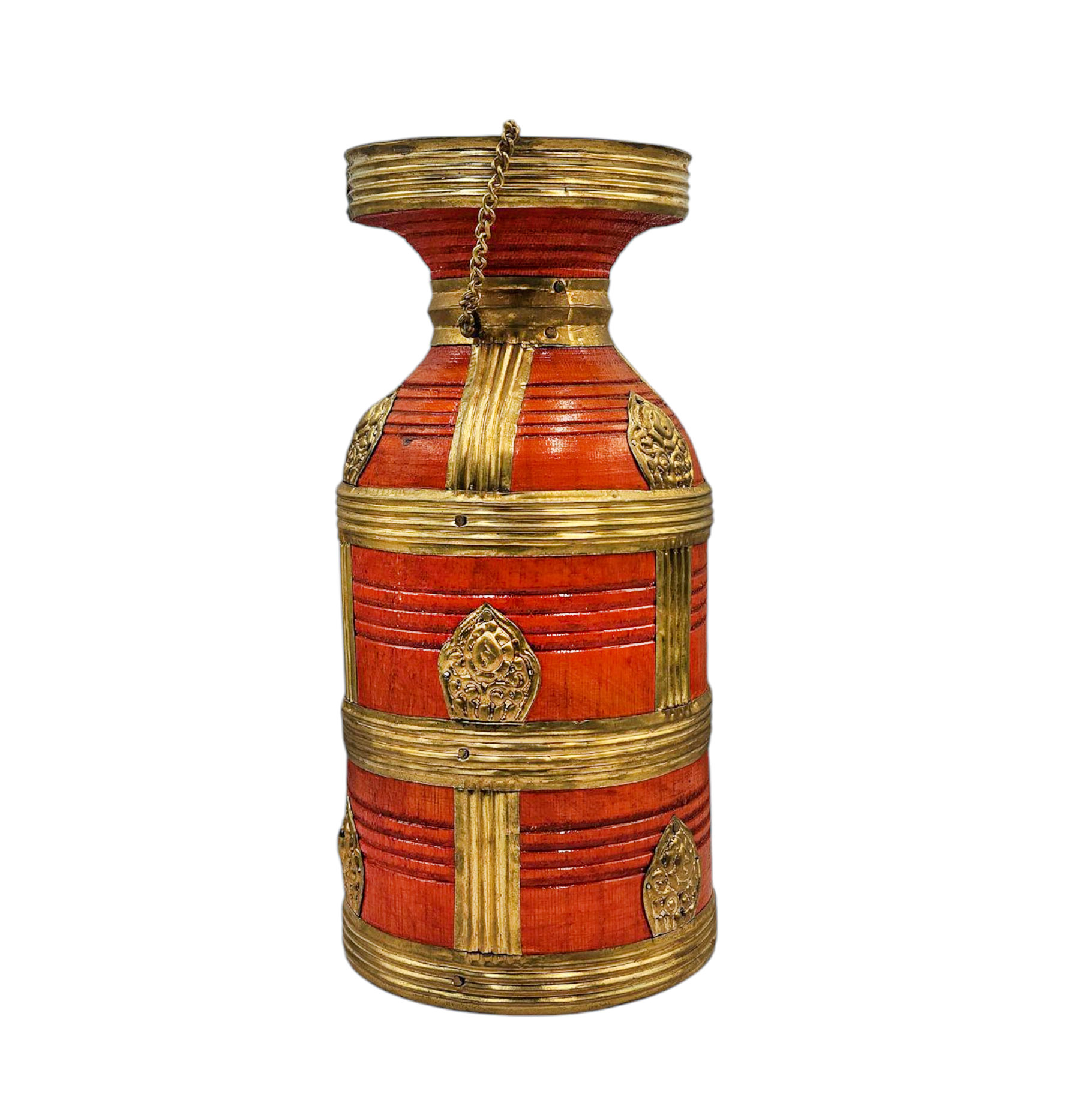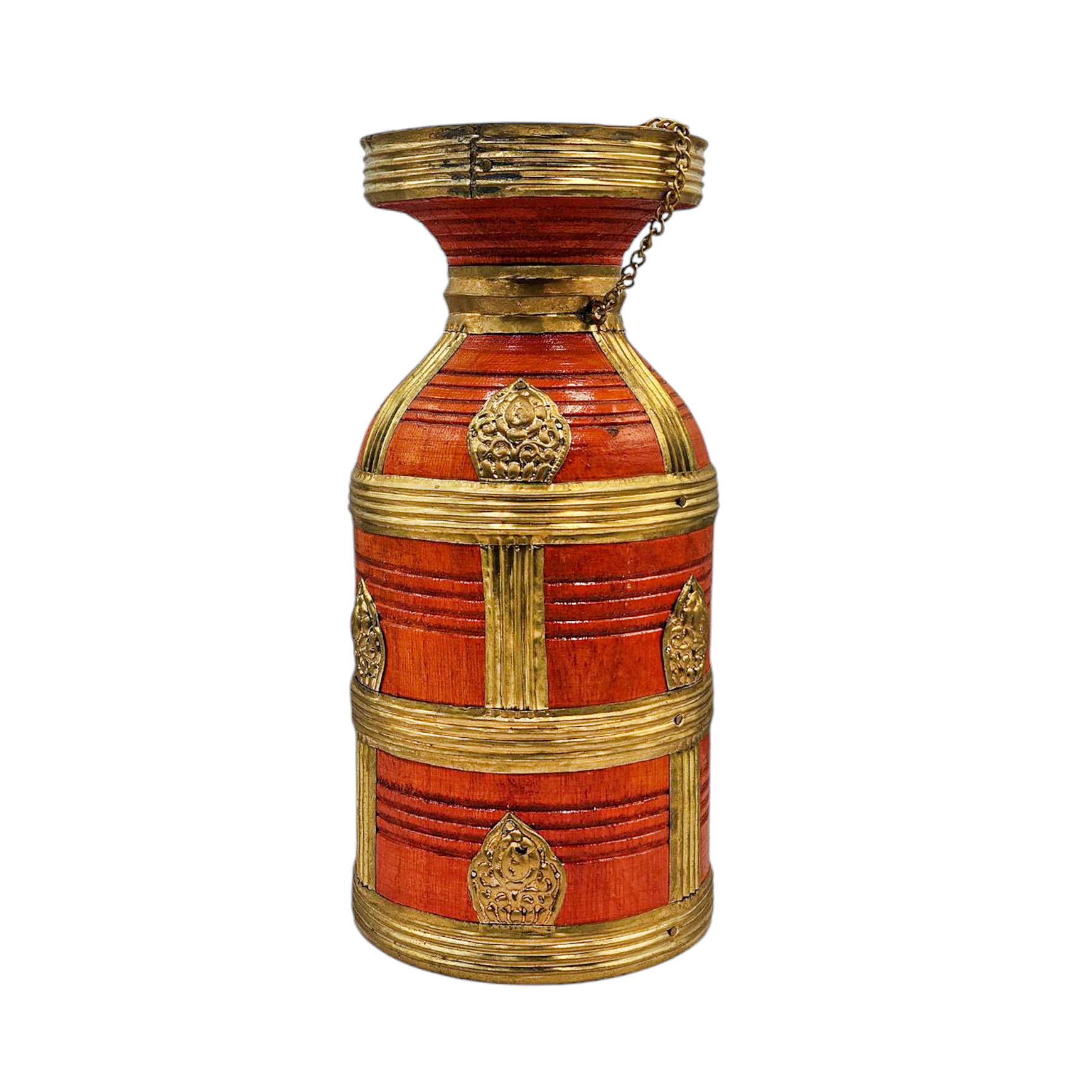It is possible that we still have it with our suppliers but the price could be different from before.
Feel free to order. We will verify availability and inform you promptly.

Safe Payment
We accept Paypal, Money Transfer, Bank Transfer
Confidence
Protection covers your purchase and personal data.
Worldwide Delivery
We ship Worldwide, except Russia.Shipping cost US$25.2 for upto 0.5 kgs

Hotline
Talk to help line for your question on 9841267335The [hq], Tibetan Copper Torma, Deep Carving [full Gold Plated] has been crafted using the ceramic mold casting process, a modern approach that provides an alternative to traditional methods such as the lost-wax system or rubber molding. Also referred to as ceramic molding, this technique involves the creation of a ceramic mold to cast the statue. The process begins by making a precise and detailed wax model of the desired sculpture. The wax model is then coated with layers of ceramic material, creating a sturdy mold. Once the mold is complete, it is fired in a kiln, causing the wax to melt and escape, leaving behind a cavity that perfectly replicates the original sculpture. Molten metal is then poured into the mold, allowing it to fill the cavity and take on the desired form. Once cooled and solidified, the ceramic mold is carefully broken away, revealing the final metal statue. Read More . . .
The Tibetan term comes from the root gtor-ba which means to "cast away, break up, or scatter". This implies both a sense of offering and of letting go or non-attachment.
Deity tormas
Deity tormas (Wylie: rten gtor) are kept on the shrine, and represent a particular tantric deity. These tormas vary in complexity from a very simple cone painted white for peaceful deities like Tara and Avalokiteshvara, to very complex designs for semi-wrathful deities like Vajrayogini and Chakrasamvara.
Food tormas
Food tormas (Wylie: skang gtor) are used in feast practices and are consumed partially by practitioners during the feast, with leftovers (Wylie: dme gtor) offered to lower beings after being blessed. In some traditions, food tormas are now made with more contemporary ingredients whereas others stay faithful to the barley flour tradition.
Offering tormas
Offering tormas may be made for and offered to deities (Wylie: sgrub gtor / mchod gtor), to Dharma Protectors, to obstructing spirits, or to other lower beings. Torma for obstructing spirits are called gektor (Wylie: gegs gtor).
Medicinal torma
A torma may be used in Tibetan medicine to extract an illness from a patient as a cure. The torma is then cast away.
Captured torma
A captured torma (Wylie: gta' gtor) may be used to speed completion of activities, by planning to offer the torma at the completion of the activity thereby encouraging successful activity.
Inner, secret and very secret torma
Practicing meditation with deity visualization is considered a form of torma offering, though no physical cake is created and then offered. Similarly, offering one's internal emotional and mental experiences and experience of suchness are non-physical forms of torma offerings.


![[hq], Tibetan Copper Torma, Deep Carving [full Gold Plated]](https://handicraftseller.com/uploads/pics/product/thumb/2020/09/21509.jpg)
![[hq], Tibetan Copper Torma, Deep Carving [full Gold Plated]](https://handicraftseller.com/uploads/pics/product/thumb/2020/09/21509_0.jpg)
![[hq], Tibetan Copper Torma, Deep Carving [full Gold Plated]](https://handicraftseller.com/uploads/pics/product/thumb/2020/09/21509_1.jpg)
![[hq], Tibetan Copper Torma, Deep Carving [full Gold Plated]](https://handicraftseller.com/uploads/pics/product/thumb/2020/09/21509_2.jpg)
![[hq], Tibetan Copper Torma, Deep Carving [full Gold Plated]](https://handicraftseller.com/uploads/pics/product/thumb/2020/09/21509_3.jpg)

 Theki, Nepalese Traditional Curd, Yogurt Setting Pot, Jar, Canister" title="
Theki, Nepalese Traditional Curd, Yogurt Setting Pot, Jar, Canister" title=" Theki, Nepalese Traditional Curd, Yogurt Setting Pot, Jar, Canister" title="
Theki, Nepalese Traditional Curd, Yogurt Setting Pot, Jar, Canister" title=" with
with  with
with  and Water
and Water  and Water
and Water  Antique Finishing
Antique Finishing  Antique Finishing
Antique Finishing  offering Rice" title="Dophor, Nesi, Vessel For
offering Rice" title="Dophor, Nesi, Vessel For  offering Rice" title="Dophor, Nesi, Vessel For
offering Rice" title="Dophor, Nesi, Vessel For  Dophor, Nesi, Vessel For
Dophor, Nesi, Vessel For  Dophor, Nesi, Vessel For
Dophor, Nesi, Vessel For  Hq Tsebum : Ritual Long Life Vase For Long Life
Hq Tsebum : Ritual Long Life Vase For Long Life  Hq Tsebum : Ritual Long Life Vase For Long Life
Hq Tsebum : Ritual Long Life Vase For Long Life  and Metal Siku Design Buddhist Urn
and Metal Siku Design Buddhist Urn  and Metal Siku Design Buddhist Urn
and Metal Siku Design Buddhist Urn  offering,
offering,  offering,
offering,  offering Rice,
offering Rice,  offering Rice,
offering Rice,